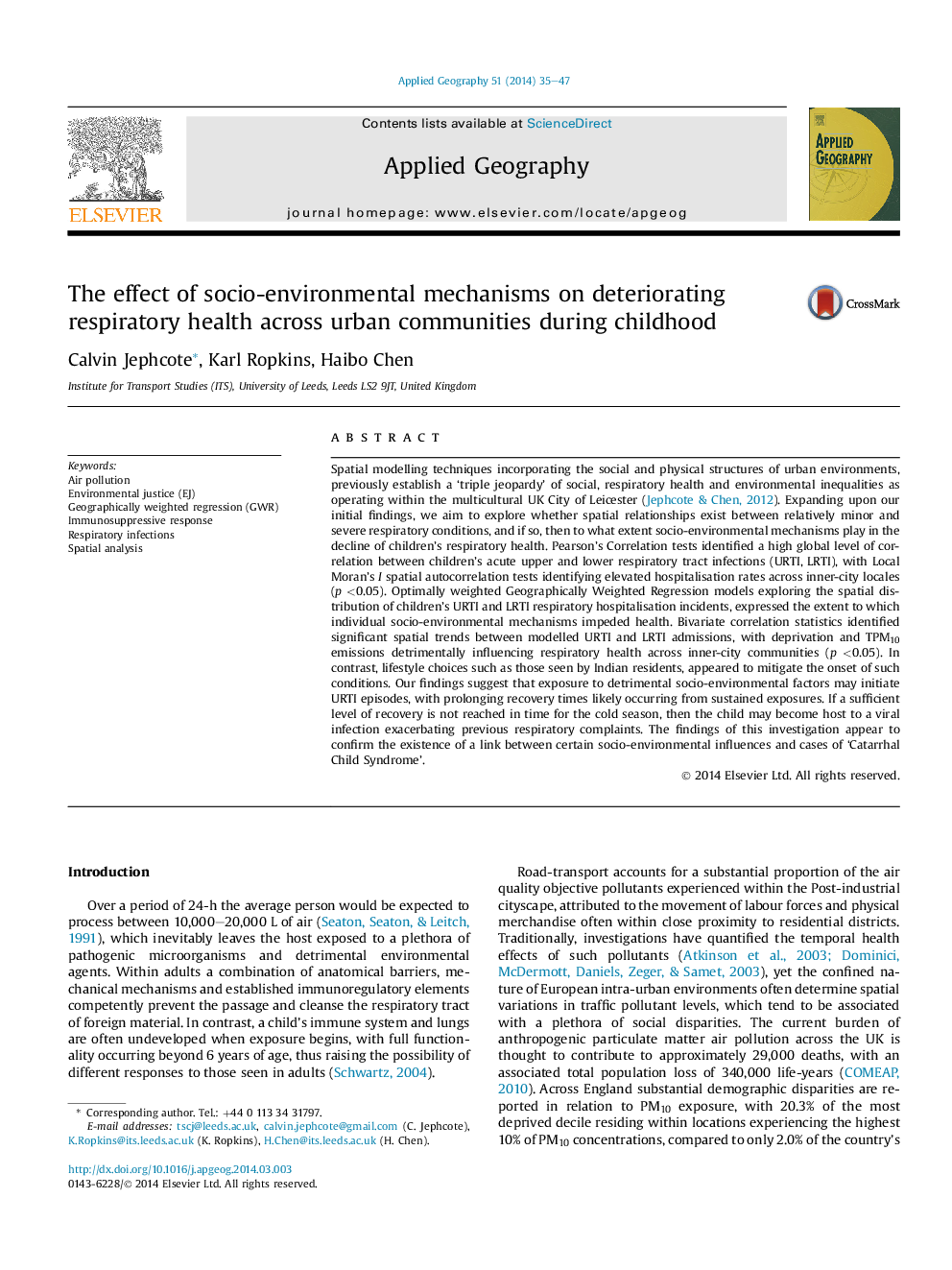| Article ID | Journal | Published Year | Pages | File Type |
|---|---|---|---|---|
| 83344 | Applied Geography | 2014 | 13 Pages |
•Explores how socio-environmental mechanisms deteriorate respiratory health.•Provides a standardised procedure for optimally selecting GWR weight structures.•Socio-environmental influences initiate acute upper respiratory infections.•Sustained exposures provide immunosuppressive responses, worsening respiratory health.•Plausible link between socio-environmental factors and ‘Catarrhal Child Syndrome’.
Spatial modelling techniques incorporating the social and physical structures of urban environments, previously establish a ‘triple jeopardy’ of social, respiratory health and environmental inequalities as operating within the multicultural UK City of Leicester (Jephcote & Chen, 2012). Expanding upon our initial findings, we aim to explore whether spatial relationships exist between relatively minor and severe respiratory conditions, and if so, then to what extent socio-environmental mechanisms play in the decline of children's respiratory health. Pearson's Correlation tests identified a high global level of correlation between children's acute upper and lower respiratory tract infections (URTI, LRTI), with Local Moran's I spatial autocorrelation tests identifying elevated hospitalisation rates across inner-city locales (p <0.05). Optimally weighted Geographically Weighted Regression models exploring the spatial distribution of children's URTI and LRTI respiratory hospitalisation incidents, expressed the extent to which individual socio-environmental mechanisms impeded health. Bivariate correlation statistics identified significant spatial trends between modelled URTI and LRTI admissions, with deprivation and TPM10 emissions detrimentally influencing respiratory health across inner-city communities (p <0.05). In contrast, lifestyle choices such as those seen by Indian residents, appeared to mitigate the onset of such conditions. Our findings suggest that exposure to detrimental socio-environmental factors may initiate URTI episodes, with prolonging recovery times likely occurring from sustained exposures. If a sufficient level of recovery is not reached in time for the cold season, then the child may become host to a viral infection exacerbating previous respiratory complaints. The findings of this investigation appear to confirm the existence of a link between certain socio-environmental influences and cases of ‘Catarrhal Child Syndrome’.
